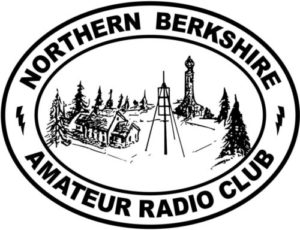Most of the NoBARC repeaters are situated atop Mt. Greylock, in the Northwest corner of Massachusetts. At 3500 ft, Mt. Greylock has a range, without obstruction, of about 125 miles. This means that the 146.910 repeater has one of the widest coverages on the East Coast.

Mount Greylock, Massachusetts
| Name | RX Freq N or W | RX Tone/NAC | TX Freq N or W | TX Tone/NAC | Mode (A, D or M) | Remarks |
| Mount Greylock | 53.2300 W | 71.9 | 52.2300 W | 162.2 | A | ONLINE |
| Great Barrington | 145.2700 W | 136.5 | 144.6700 W | 136.5 | A | ONLINE (Analog and Fusion) |
| Mount Greylock | 146.9100 W | 162.2 | 146.3100 W | 162.2 | A | ONLINE (Analog only) |
| Pittsfield | 147.0300 W | 162.2 | 147.6300 W | 162.2 | A | OFFLINE |
| Mount Greylock | 224.1000 W | 162.2 | 222.5000W | 162.2 | A | ONLINE |
| Mount Greylock | 449.4250 W | 162.2 | 444.4250 W | 162.2 | A | ONLINE (Analog only) |
| Florida Mountain | 449.6750 N | CC1 | 444.6750 N | CC1 | D | ONLINE DMR |
| Mount Greylock | 927.8750 W | 100.0 | 902.8750 W | 100.0 | A | ONLINE (NEAR-900 soon) |
| Mount Greylock | 10.368.320 | CSQ | N/A | N/A | A | Beacon |
Important items to know:
Requesting use of our repeaters for special events
Please report any problems or issues with repeaters to any of the club officers.
(Repeater status chart last updated: 22 October 2025)
Repeater notes
146.91 Repeater is a GE Mastr II, output power about 40 watts. No pre-amp yet.
444.425 Repeater is also a GE Mastr II, output power about 50 watts.
Florida DMR updates!
As of now a temporary antenna is in place at the lower location while we await the new, higher location 60-70 feet above the ground. There will have to be a work bee to finish hooking it up. We are in need of some hardline to finish hooking it up. If you have any you would like to donate contact Eric KA1SUN.
Near 900 project continues
Matt K1VN and Cory N1XWS have been working on an Allstar link node for 900 mhz.
- This will connect us to the Northeast Nodes!
- Doing this will bring more activity.
- We will be doing testing on and off if you hear us.
This will open up some great things and radio fun!
NoBARC EchoLink connection
The NoBARC EchoLink connection ( K1FFK-R ) is operating on the 146.91 machine.
NoBARC Packet Node
The NoBARC WMA packet node operates on 145.05 and is located atop Mt. Greylock. This node is turned off during VHF/UHF contests.
NoBARC APRS Node
The NoBARC APRS packet node operates on 144.390 and is located atop Mt. Greylock. This node is turned off during VHF/UHF contests.
NoBARC 10 GHz Beacon
This beacon is somewhat susceptible for drift, so please tune around a bit.
